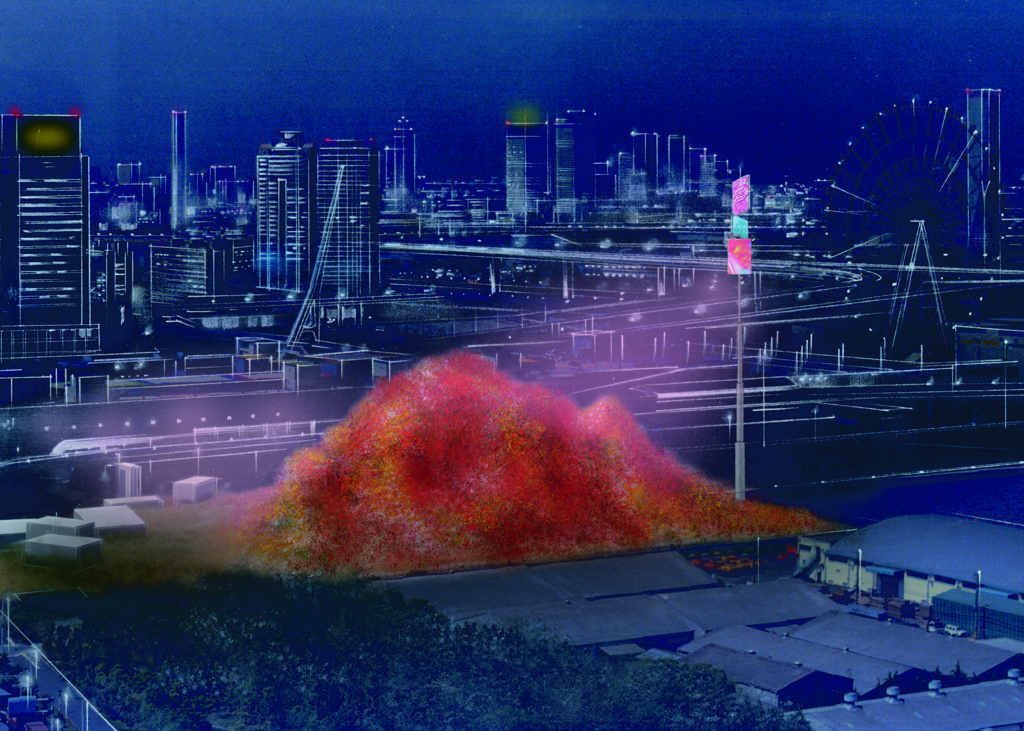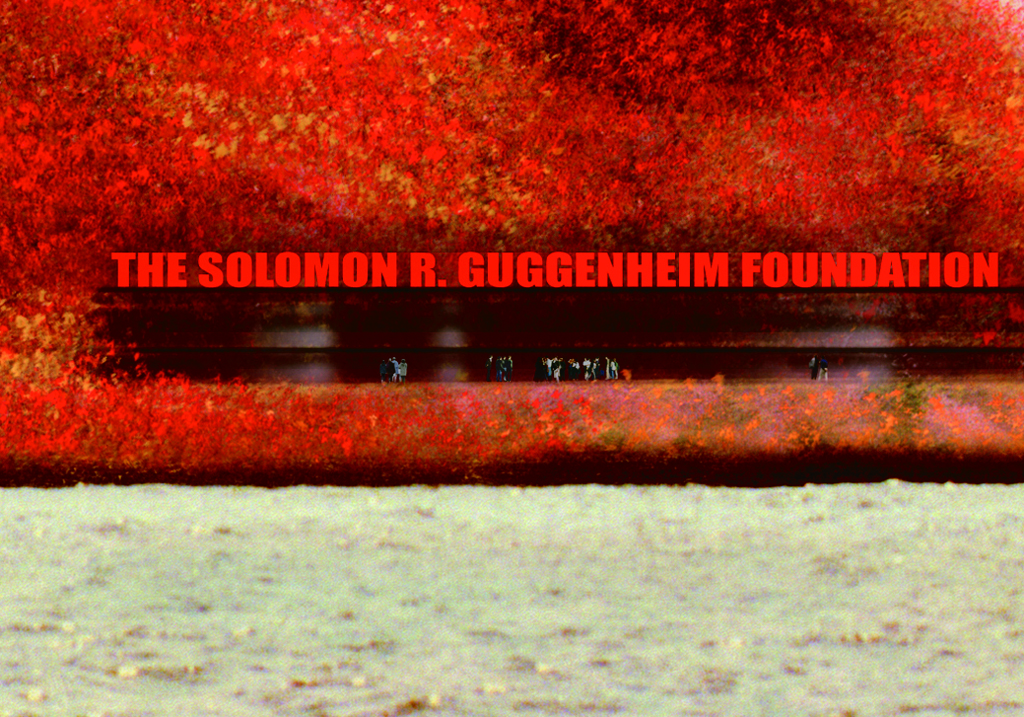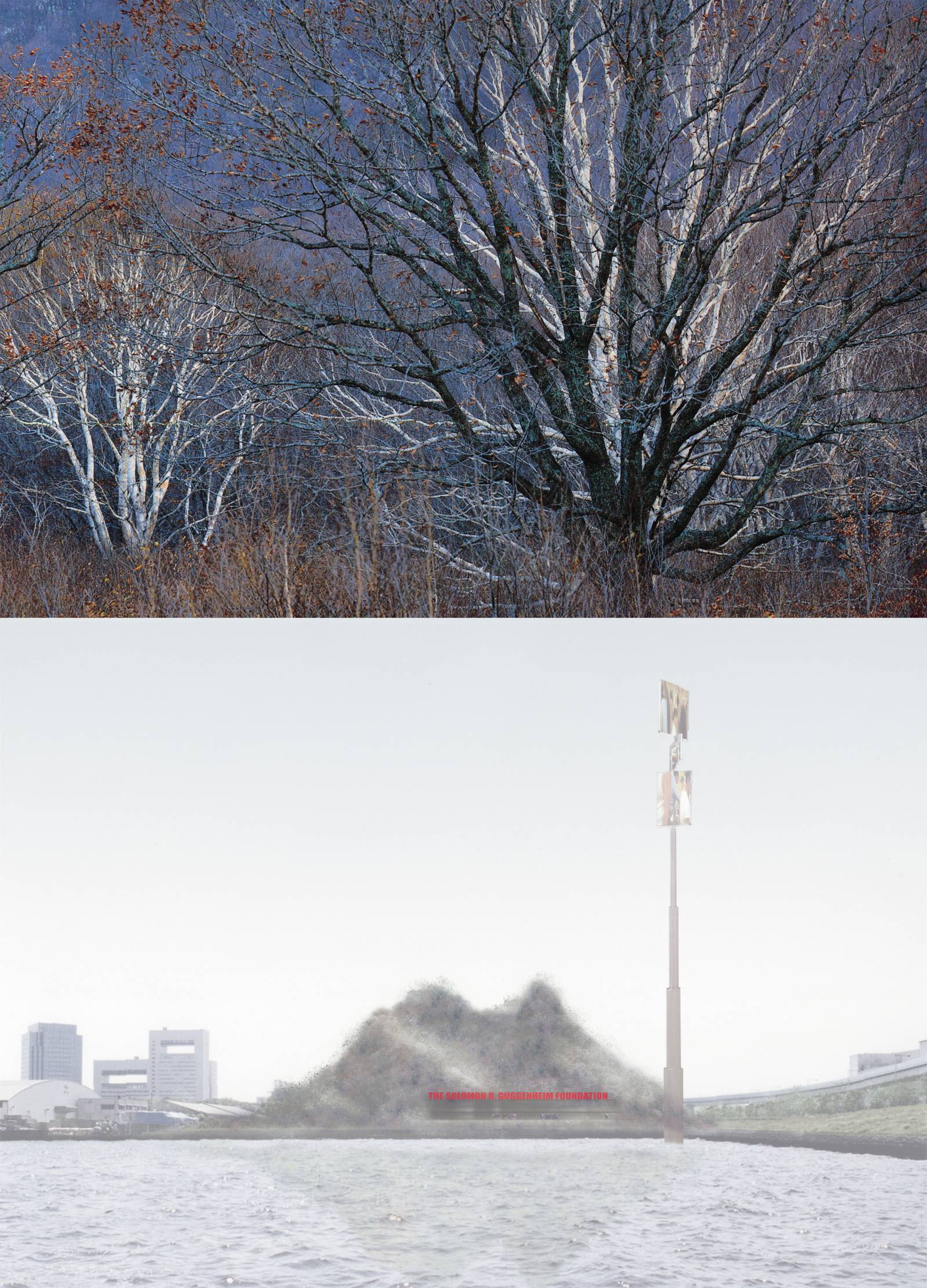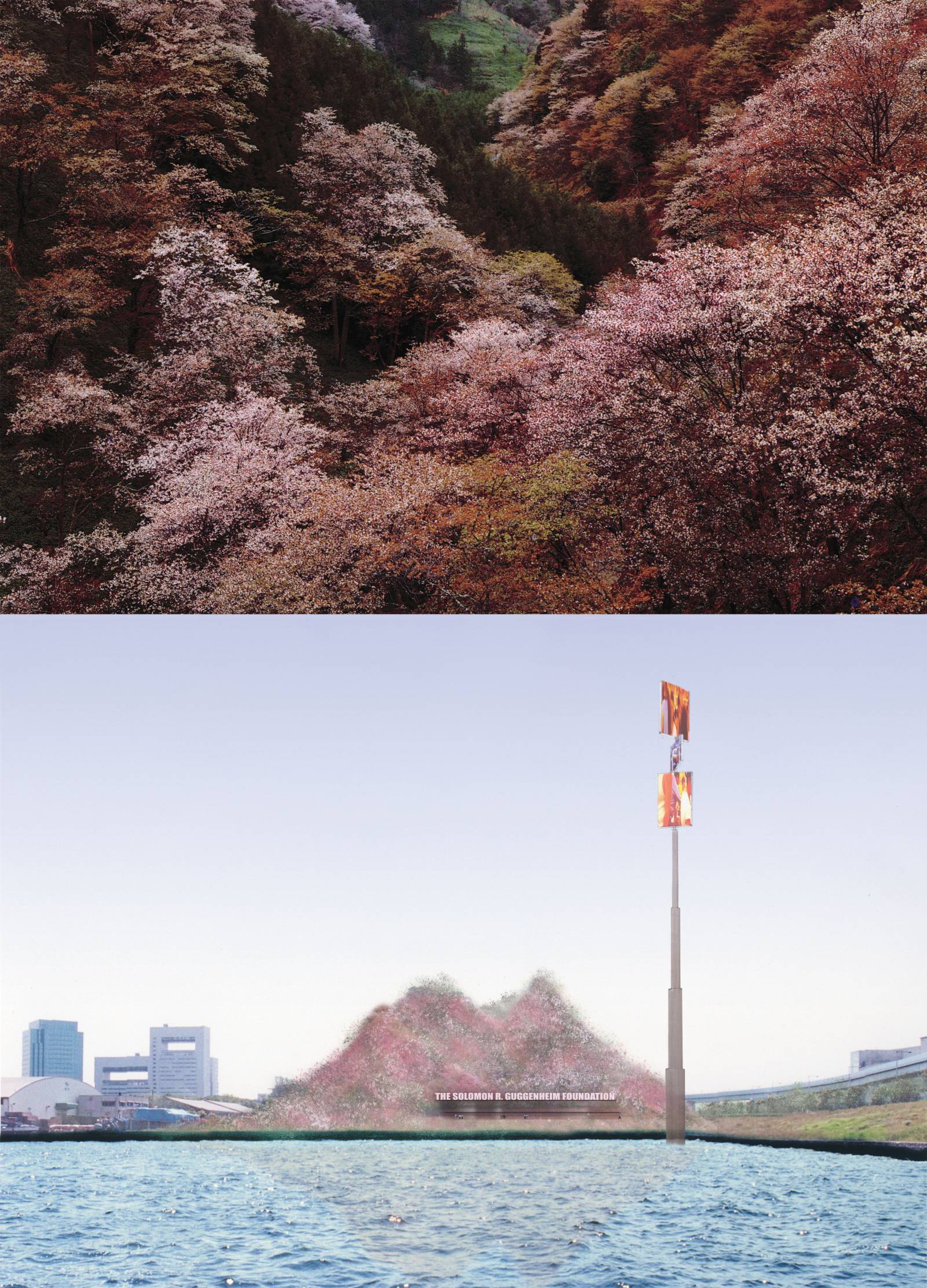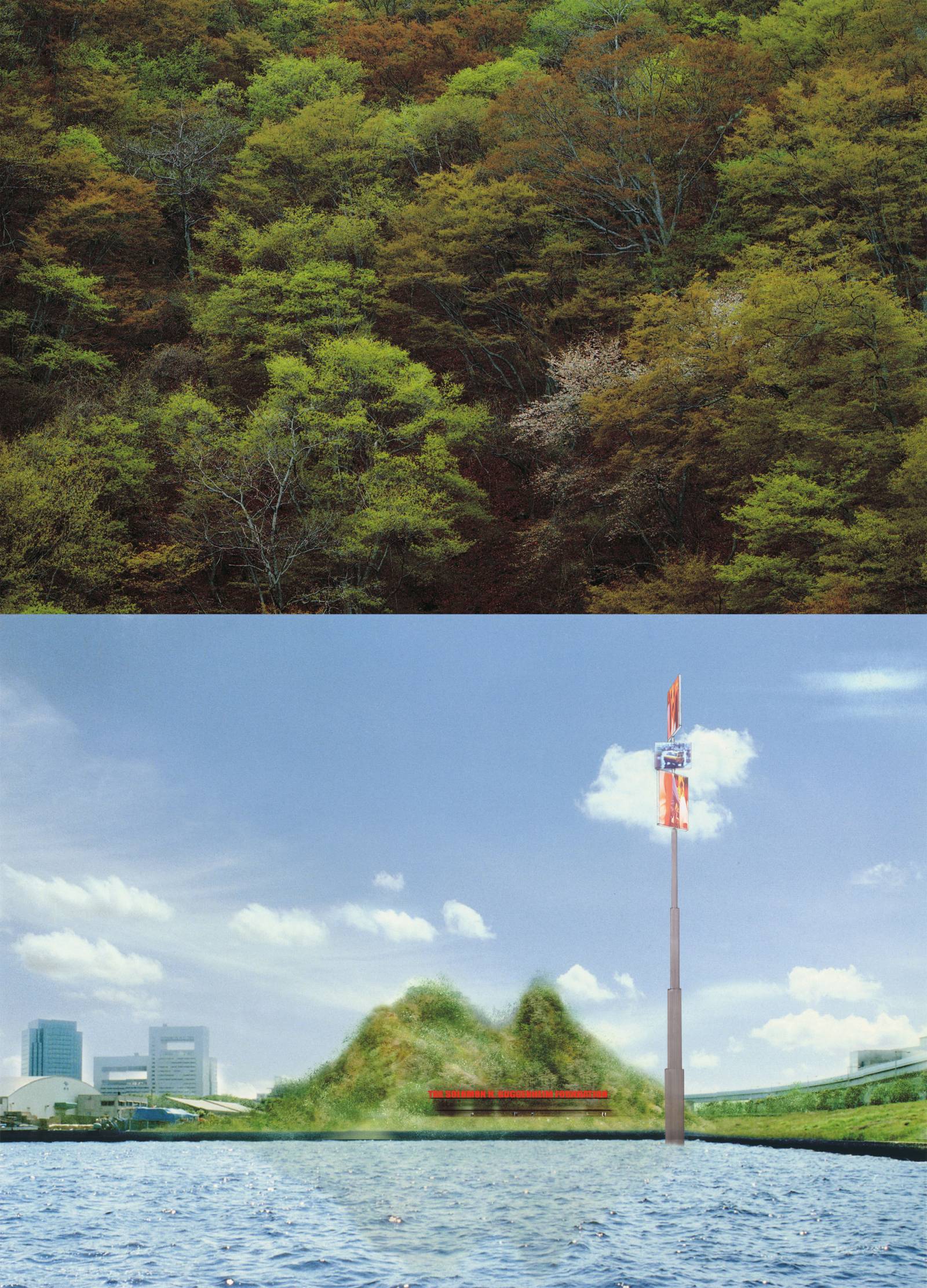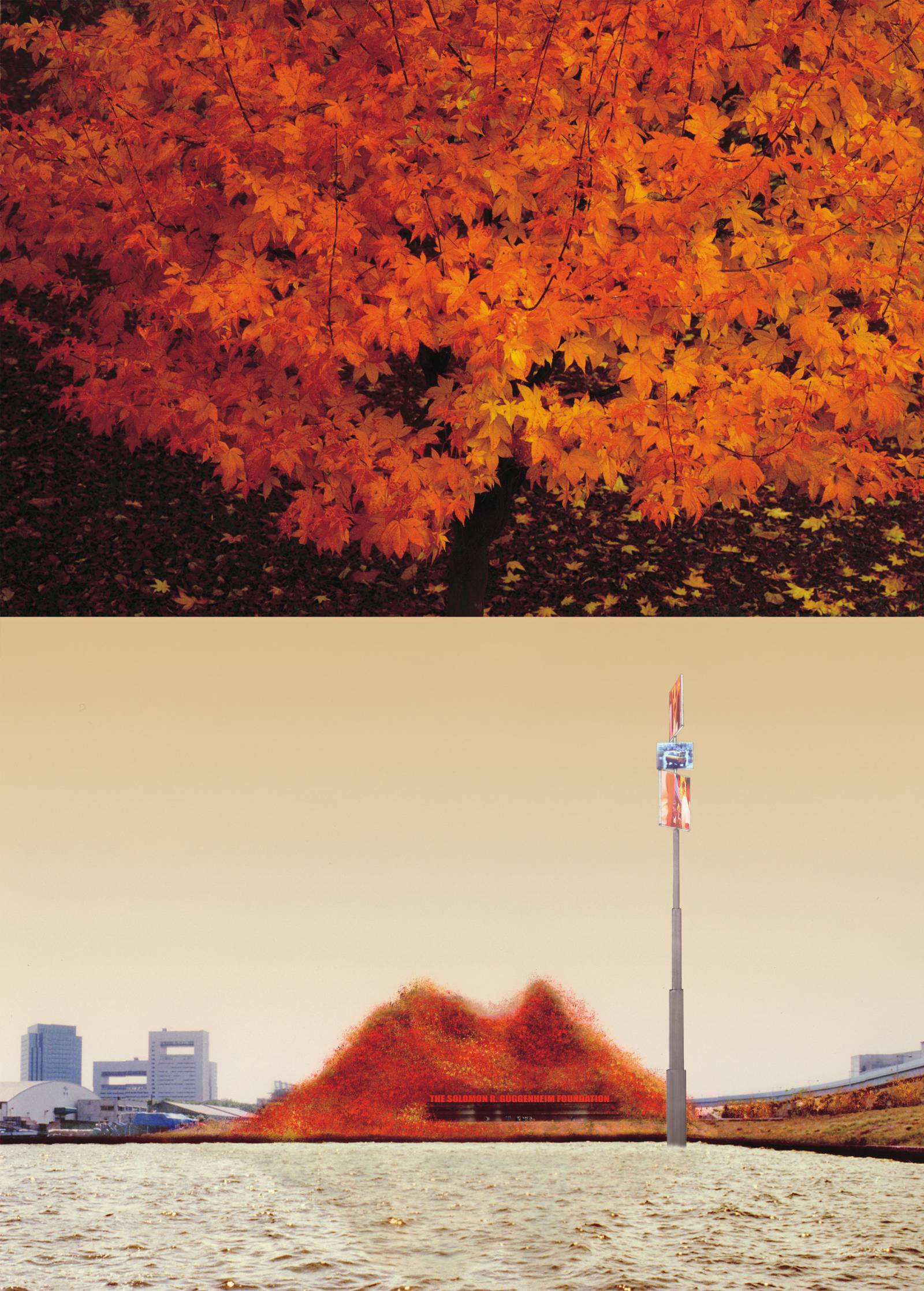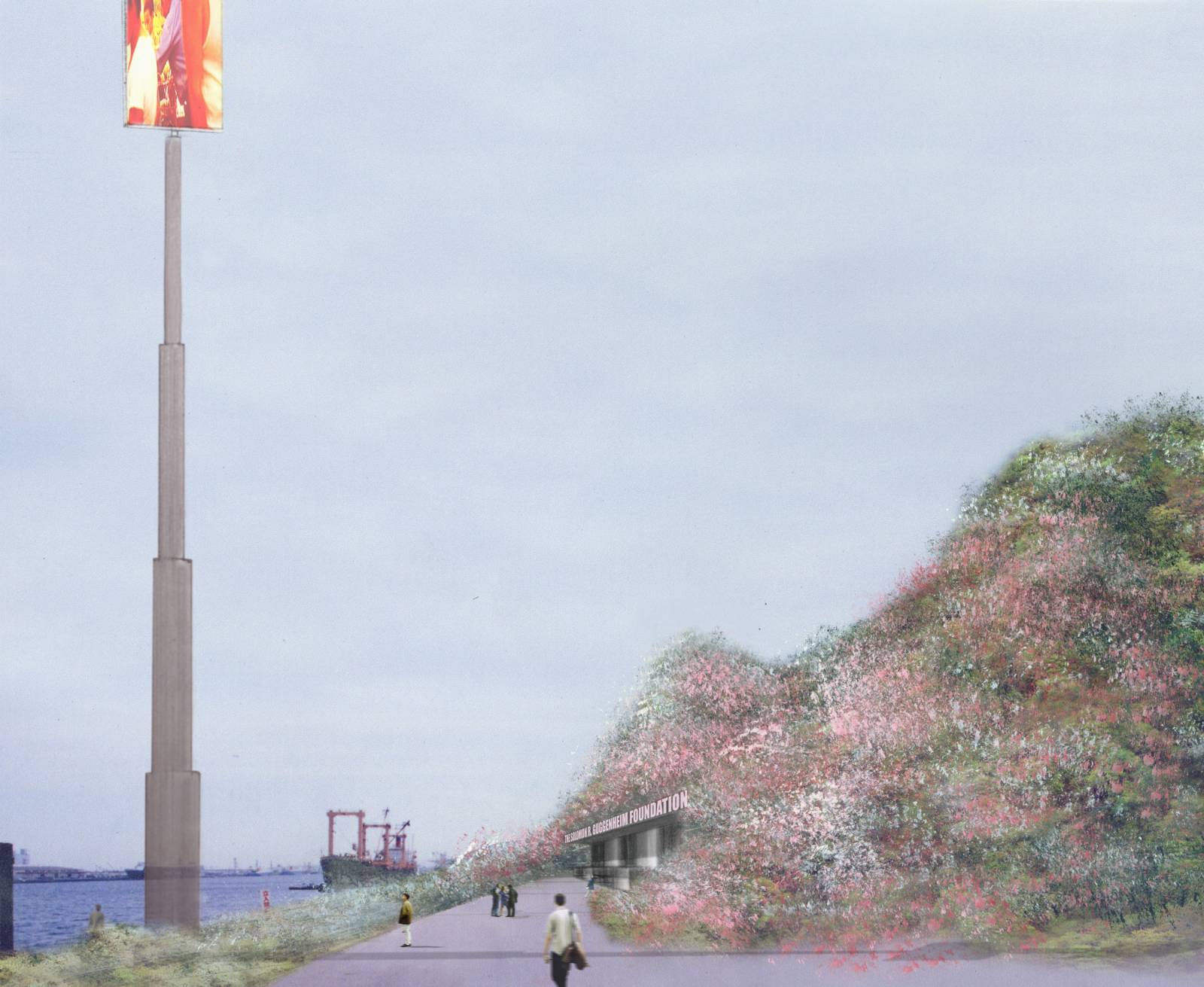Temporary Guggenheim Museum
- Tokyo, Japan
Artifice – Nature
The paradigm: « artifice – nature » is one of the basis of the Japanese culture and the essence of the Japanese garden: the cult of the present, the revelation of fleeting instant, the conscience of the passing time, the emotion of the seasons.
Nature as positive counterpoint to the urbanization of Tokyo. The gardens are the places of privilege, the nobility of the city (Imperial parks, temple gardens). In Japan, nature accompanies all dimensions and relief, the hills, reputed to be inconstructable.
Artifice and Nature are chosen as a strategy for the alternative: Indispensable alternative because it is so difficult to exist in the urban collage of Tokyo. The Odaiba neighborhood is a perfect example.
For the Temporary Guggenheim of Tokyo, there needs to be an exceptional statute, a singularity in keeping with the world of the Japanese and the world of Art. Here, the context is in the difference, in the aside, but also in the permanence of references.
Here, the Temporary Guggenheim of Tokyo becomes architecture-nature with multiple connotations and evocations, both Japanese and artistic.
- Japanese: The relief associated with nature.The tree as revelation of the ephemeral, the cherry, the red maple trees as an emblem of the volcano. The mountain, (the place of meditation and of the sacred, etc.)
- Artistic: The Mount Fuji, Kapoor, Penone, Koons, Simmonds… The pyramid and its buried treasures, etc.
Beneath an artificial relief which is in accord with its allusions, the Temporary Guggenheim of Tokyo creates large spaces constructed as solid steel infrastructures from which one can see, through a large opening in the horizon, the water of the port and the bay, and through this large window, a profuse amount of trees. A sinuous walk takes the visitor into a crater-restaurant taken over by cherry and maple trees. The Temporary Guggenheim of Tokyo is the little hill, the hill of seasons: white-pink in the springtime of cherry blossoms, tender green for the summer, flamboyant for autumn, and gray as bark in winter. It shows itself as well by a large totemic mast, which turns three large lit images, slowly.
It tries to intrigue, mysterious and attractive in order to become the icon of the new cultural life in Tokyo.
Jean Nouvel
